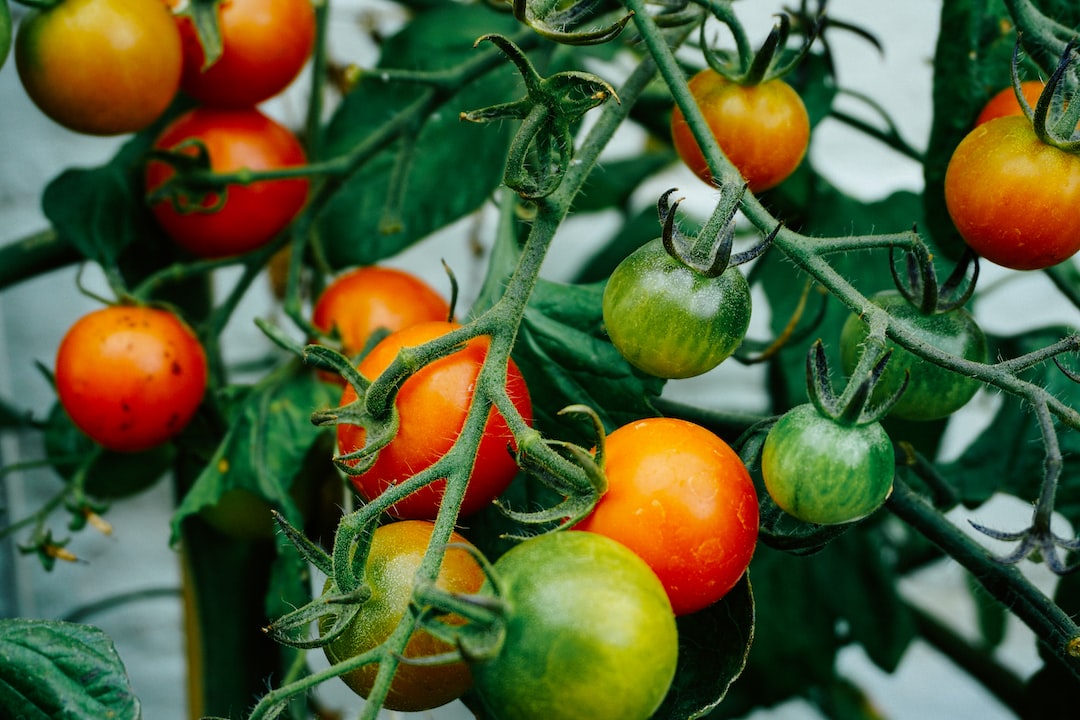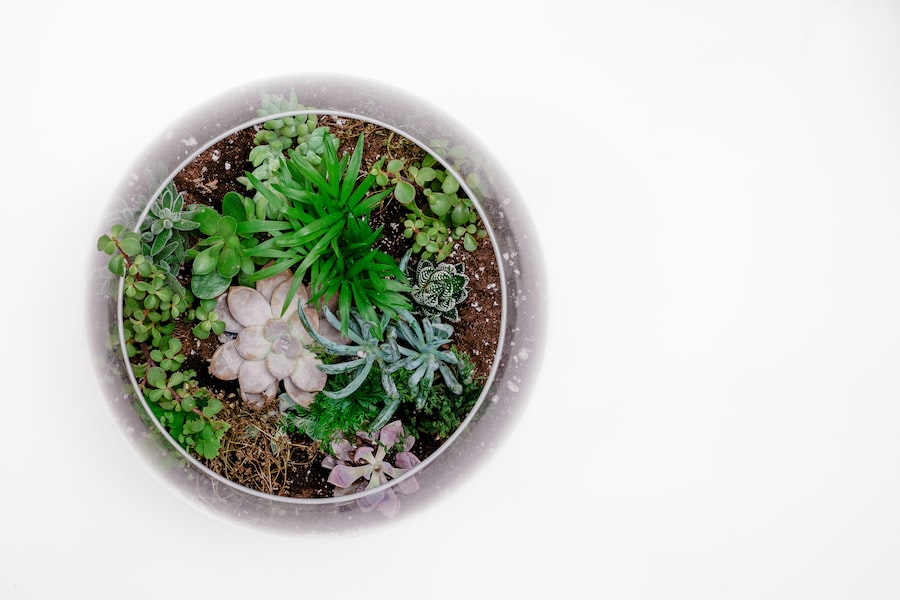Step-by-Step Guide: Growing Beautiful Geraniums from Cuttings

Geraniums are a popular choice for gardeners due to their vibrant colors, long blooming period, and ability to thrive in various climates. These versatile plants come in a wide range of colors, including red, pink, white, and purple, making them a beautiful addition to any garden or patio. One of the benefits of geraniums is their ability to be easily propagated, allowing gardeners to expand their collection or share their favorite plants with friends and family.
Key Takeaways
- Geraniums are beautiful plants that can be easily propagated through cuttings.
- To prepare for geranium propagation, you will need tools such as pruning shears, rooting hormone, and a container with drainage holes.
- The best time to take cuttings from geraniums is in the spring or early summer.
- When taking cuttings, it is important to choose healthy stems and remove any flowers or buds.
- To prepare cuttings for planting, remove the lower leaves and dip the cut end in rooting hormone before placing in soil.
Preparing for Geranium Propagation: Tools and Materials
Before starting the process of propagating geraniums, it is important to gather the necessary tools and materials. These include a sharp pair of pruning shears or scissors, clean pots or containers, a well-draining potting mix, rooting hormone (optional), and a spray bottle filled with water.
Pruning shears or scissors are essential for taking cuttings from the parent plant. It is important to use clean tools to prevent the spread of diseases or pests. Clean pots or containers should be used to provide a suitable environment for the cuttings to root and grow. A well-draining potting mix is necessary to prevent waterlogged soil, which can lead to root rot.
Rooting hormone is an optional tool that can be used to promote root growth in the cuttings. It is available in powder or liquid form and can be applied to the cut end of the stem before planting. A spray bottle filled with water is useful for misting the cuttings to keep them hydrated during the rooting process.
Choosing the Right Time to Take Cuttings
The best time to take cuttings from geraniums is in the spring or early summer when the plants are actively growing. This is when they have the highest chance of successfully rooting and establishing themselves as new plants.
When choosing the right time to take cuttings, it is important to consider the weather conditions. Avoid taking cuttings during extreme heat or cold, as this can stress the plants and reduce their chances of survival. It is also important to choose healthy, disease-free plants for propagation to ensure the success of the cuttings.
Taking Cuttings from Geraniums: Best Practices
| Geranium Variety | Best Time to Take Cuttings | Rooting Hormone | Soil Type | Light Requirements | Success Rate |
|---|---|---|---|---|---|
| Zonal Geraniums | Spring or early summer | Optional | Well-draining soil | Full sun to partial shade | High |
| Ivy Geraniums | Spring or early summer | Recommended | Loose, sandy soil | Partial shade | High |
| Scented Geraniums | Spring or early summer | Recommended | Well-draining soil | Partial shade | Medium |
To take cuttings from geraniums, start by selecting a healthy stem that is about 4-6 inches long. Using sharp pruning shears or scissors, make a clean cut just below a leaf node, which is where the leaf meets the stem. Remove any leaves from the lower half of the cutting to prevent them from rotting in the soil.
If using rooting hormone, dip the cut end of the stem into the hormone and gently tap off any excess. This will help promote root growth in the cutting. Place the cutting in a pot or container filled with well-draining potting mix, making sure that at least one leaf node is buried in the soil.
Preparing the Cuttings for Planting
Before planting the cuttings, it is important to prepare them properly to ensure successful growth. This involves removing any leaves from the lower half of the stem, as these can rot in the soil and hinder root development. It is also a good idea to trim any large leaves on the upper half of the stem to reduce water loss through transpiration.
After preparing the cuttings, they can be planted in pots or containers filled with well-draining potting mix. Make sure that at least one leaf node is buried in the soil to encourage root growth.
Planting Geranium Cuttings: Soil and Container Requirements

When planting geranium cuttings, it is important to choose a well-draining potting mix that will allow excess water to drain away from the roots. This will help prevent root rot and other issues caused by waterlogged soil.
In terms of container requirements, choose pots or containers that are the appropriate size for the cuttings. The containers should have drainage holes to allow excess water to escape. It is also a good idea to use clean containers to prevent the spread of diseases or pests.
Caring for Geranium Cuttings: Watering, Fertilizing, and Light Requirements
Proper care is essential for the successful growth of geranium cuttings. Watering is an important aspect of care, as the cuttings need to be kept moist but not waterlogged. It is best to water the cuttings from the bottom by placing the pots or containers in a tray filled with water and allowing the soil to soak up the moisture.
Fertilizing is also important for the growth and development of geranium cuttings. Use a balanced fertilizer, such as a 10-10-10 or 20-20-20 formula, and apply it according to the instructions on the packaging. Be careful not to over-fertilize, as this can burn the roots and damage the plants.
In terms of light requirements, geranium cuttings need bright but indirect light. Place them in a location where they will receive at least 6 hours of sunlight per day, but avoid placing them in direct sunlight, as this can cause sunburn.
Monitoring Geranium Cuttings for Growth and Development
After planting geranium cuttings, it is important to monitor them closely for signs of growth and development. Look for new leaves or shoots emerging from the stem, which indicates that the cuttings have successfully rooted and are starting to grow.
It is also important to monitor the moisture levels in the soil. Check the soil regularly and water as needed to keep it moist but not waterlogged. Avoid overwatering, as this can lead to root rot.
Transferring Geranium Cuttings to Larger Containers
Once geranium cuttings have established roots and are showing signs of growth, they can be transferred to larger containers. This is usually done when the roots have filled the current container and are starting to become root-bound.
To transfer the cuttings, gently remove them from their current container, being careful not to damage the roots. Place them in a larger container filled with well-draining potting mix, making sure that the soil level is at the same height as it was in the previous container. Water the cuttings thoroughly after transplanting to help settle the soil and reduce transplant shock.
Enjoying the Fruits of Your Labor: Tips for Maintaining Beautiful Geraniums
After successfully propagating geraniums, it is important to continue providing them with proper care to ensure their continued growth and beauty. This includes regular watering, fertilizing every 4-6 weeks during the growing season, and providing them with bright but indirect light.
It is also important to monitor the plants for any signs of pests or diseases. Common issues that can affect geraniums include aphids, spider mites, and powdery mildew. If any issues are detected, take appropriate measures to address them, such as using insecticidal soap for pests or a fungicide for diseases.
Conclusion:
Propagating geraniums is a rewarding process that allows gardeners to expand their collection or share their favorite plants with others. By following the proper techniques and providing the necessary care, it is possible to successfully propagate geraniums and enjoy beautiful, thriving plants. So why not give geranium propagation a try and see the fruits of your labor in your own garden?



